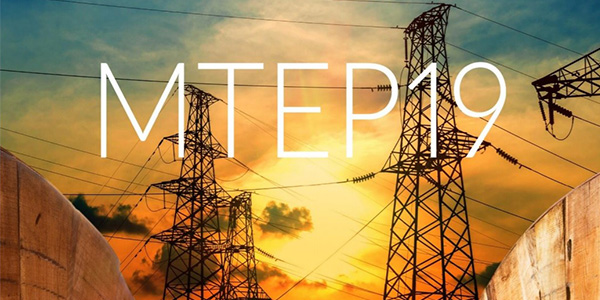By Amanda Durish Cook
ST. PAUL, Minn. — MISO staff are done assembling the RTO’s 2019 Transmission Expansion Plan (MTEP 19), presenting a nearly $4 billion draft package to the Board of Directors last week.
Instead of concentrating solely on this year’s plan, however, MISO executives at the board’s System Planning Committee meeting Sept. 17 emphasized what changes they would make to modernize the 15-year future scenarios used annually to justify transmission projects.
The proposed 2019 portfolio — 472 new projects totaling nearly $3.9 billion — is open for stakeholder review through the end of the month. The latest draft is trimmed from an earlier version that contained 483 projects at a cost of $3.95 billion. Even with the reductions, it’s still the RTO’s second-most expensive transmission buildout. (See MISO 2019 Transmission Expansion Plan Takes Shape.)
Vice President of System Planning Jennifer Curran told the board to expect some additional changes in response to stakeholder comments.
MISO said MTEP 19 is “consistent” with MTEP 18 because the package primarily consists of reliability projects. That trend appears likely to continue in the 2020 package, as the RTO has announced it would recycle its futures next year. The RTO has promised an extensive reboot of its planning projections beginning with the 2021 portfolio. (See MISO Halts Futures Work for 2020, Plans 2021 Rebuild.)
“I think [with] the status quo coming for 2020, there will be more interest in the 2021 futures,” Director Nancy Lange predicted, urging careful thought from MISO on the new futures. “I think the pace of change is only accelerating, so it’s important for MISO to think about its key planning assumptions.”
Asked by Director Phyllis Currie if there was any discord as MISO prepared MTEP 19 with stakeholders, staff cited discussions over how prominently batteries should be featured in the planning landscape.
“That’s a big focus for our team,” said Executive Director of System Planning Aubrey Johnson, adding that MISO first must create a cost recovery mechanism for storage devices.
Director Trip Doggett asked if batteries are gaining more traction because of recent technological breakthroughs or because of their transmission capabilities.
“I think it’s a ‘Yes, and…’ question,” Johnson responded, noting that batteries can mimic generation.
MISO President Clair Moeller pointed out that MTEP 19, which recommended a single battery project, anticipates just 2.5 MW of load growth. (See MISO Recommending 1st Storage-as-Tx Project.) “For perspective, 2.5 MW is the size that could be compared to a large neighborhood’s load,” he said. Moeller said that although load growth has remained flat since about 2007, load has shifted with demographics.
“So, the standard load growth isn’t driving transmission decisions. … But people are moving around,” he said.
Moeller also said differing state goals regarding their energy mixes have emerged as a planning challenge in recent years.
“When we began the [MISO] market, everyone’s fleet was about the same,” he said. “Now, not everyone thinks high wind penetration is the future. So that complicates things.”
Currie asked if neighboring RTOs were planning transmission around battery storage buildout.
“To my knowledge, we haven’t seen a strong push toward batteries,” Johnson said.
Futures Edit too Late?
Clean Grid Alliance’s Beth Soholt made use of the public comment period to call for a rework to MISO’s transmission planning strategy sooner than MTEP 21.
She pointed to utility integrated resource plans full of renewable goals, carbon-cutting pledges from state governments and a “huge customer preference and demand for renewables” as evidence that MISO cannot afford another year of waiting before it reshapes its future scenarios.
“Over another year, we’re going to use static futures,” Soholt said. “We risk the MISO system not being able to deliver what customers want in the Midwest.”
Soholt cited MISO’s February 2017 interconnection queue cycle, where all but 250 MW of the originally proposed 5 GW of renewable generation projects dropped out because of prohibitively expensive transmission upgrades.
“The processes and the systems in MISO are misaligned to solve these challenges,” Soholt said, calling the RTO’s current planning method and assumptions “frustrating and irrelevant.” She said needed transmission projects are being overlooked because of MISO’s continued underestimation of renewable growth.
Soholt said the $32 million, 345-kV Helena-to-Hampton Corner circuit project, originally identified in this year’s Market Congestion Planning Study, should have made the cut into MTEP 19. The project was set to solve congestion in southern Minnesota, but MISO said that once forecasted wind generation was removed from the equation, the project quickly lost value.
A System from Interconnection Upgrades?
Organization of MISO States President and Missouri Public Service Commissioner Daniel Hall said the RTO is ignoring “substantial” renewable growth and expressed concern over a “number of interconnection projects dropping out very late” in the queue process. He said some renewable projects were already approved by state commissions and under power purchase agreements when they were forced to exit the queue.
“We’re currently trying to plan a transmission system one interconnection at a time. … It’s a wake-up call,” Hall told the board at its meeting Thursday.
“They’re stale,” Moeller admitted of the four futures.
Board members also inquired about the lack of interregional projects with MISO, SPP Empty-handed After 3rd Project Study.)
“I think there’s [been] more planning and more discussion over the two years I’ve been here. … I’ve seen more coordination. I really think it’s a case of just because there’s congestion there doesn’t necessarily mean that it warrants a project to correct it,” Johnson said.







